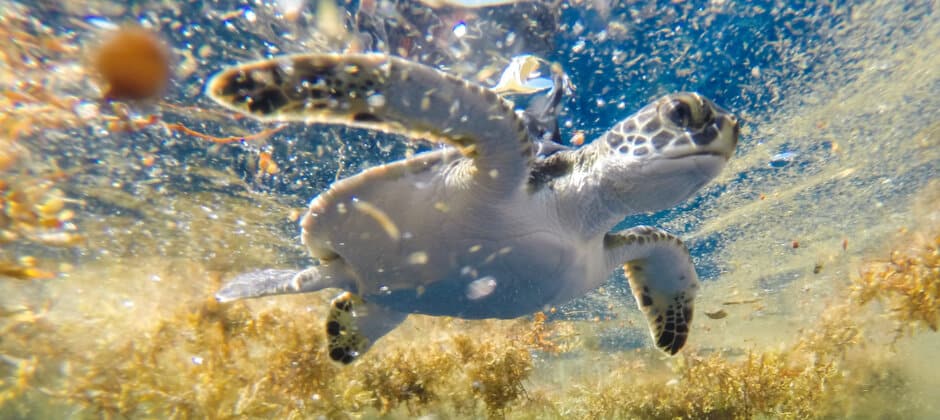Share this article
Wild Cam: Solving the hatchling sea turtle mystery
Small satellite tags glued onto green sea turtle hatchlings are revealing where the reptiles go immediately after they leave the beaches of central Florida.
The discovery will help researchers better understand how to conserve the imperiled reptiles in their most vulnerable stages of life.
“If we don’t know where they are, we can’t help them,” said Kate Mansfield, an associate professor of biology at the University of Central Florida.
Enlarge
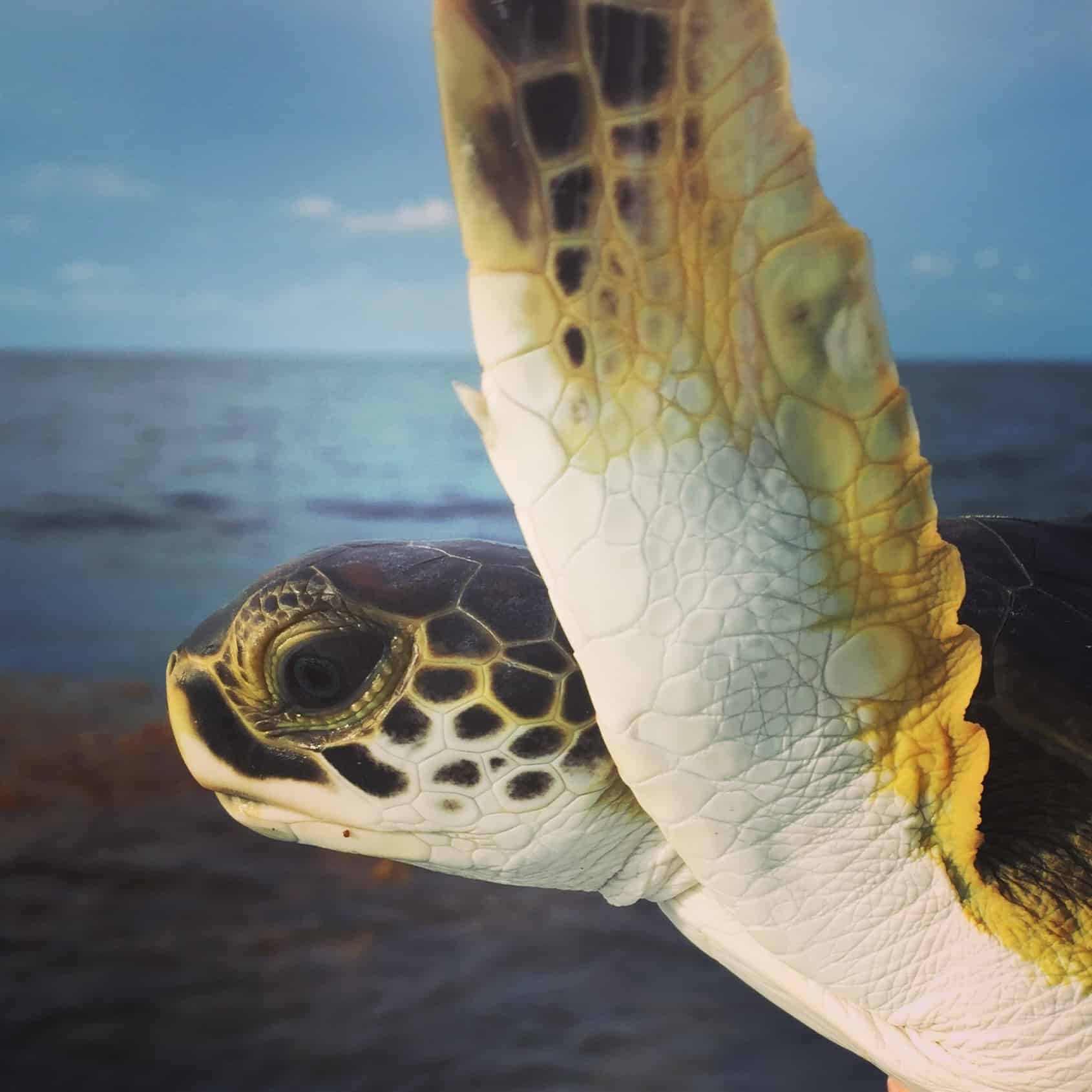
Credit: Kate Mansfield/NMFS Permit 19508
Green sea turtles (Chelonia mydas) are long-lived reptiles that often take more than three decades to reach sexual maturity. They are considered threatened under the U.S. Endangered Species Act, and endangered globally by the International Union for Conservation of Nature. While researchers know which beaches many female green sea turtles nest on as adults, where the turtles spend their first few decades of life have long been a mystery.
But these early years are a critical period, especially since the majority of turtles that hatch from beaches don’t survive to adulthood.
In a study published in the Proceedings of the Royal Society B, Mansfield and her colleagues placed miniature solar-powered tracking devices on young sea turtles from the central Atlantic coast of Florida to find out more about where they were going.
Enlarge
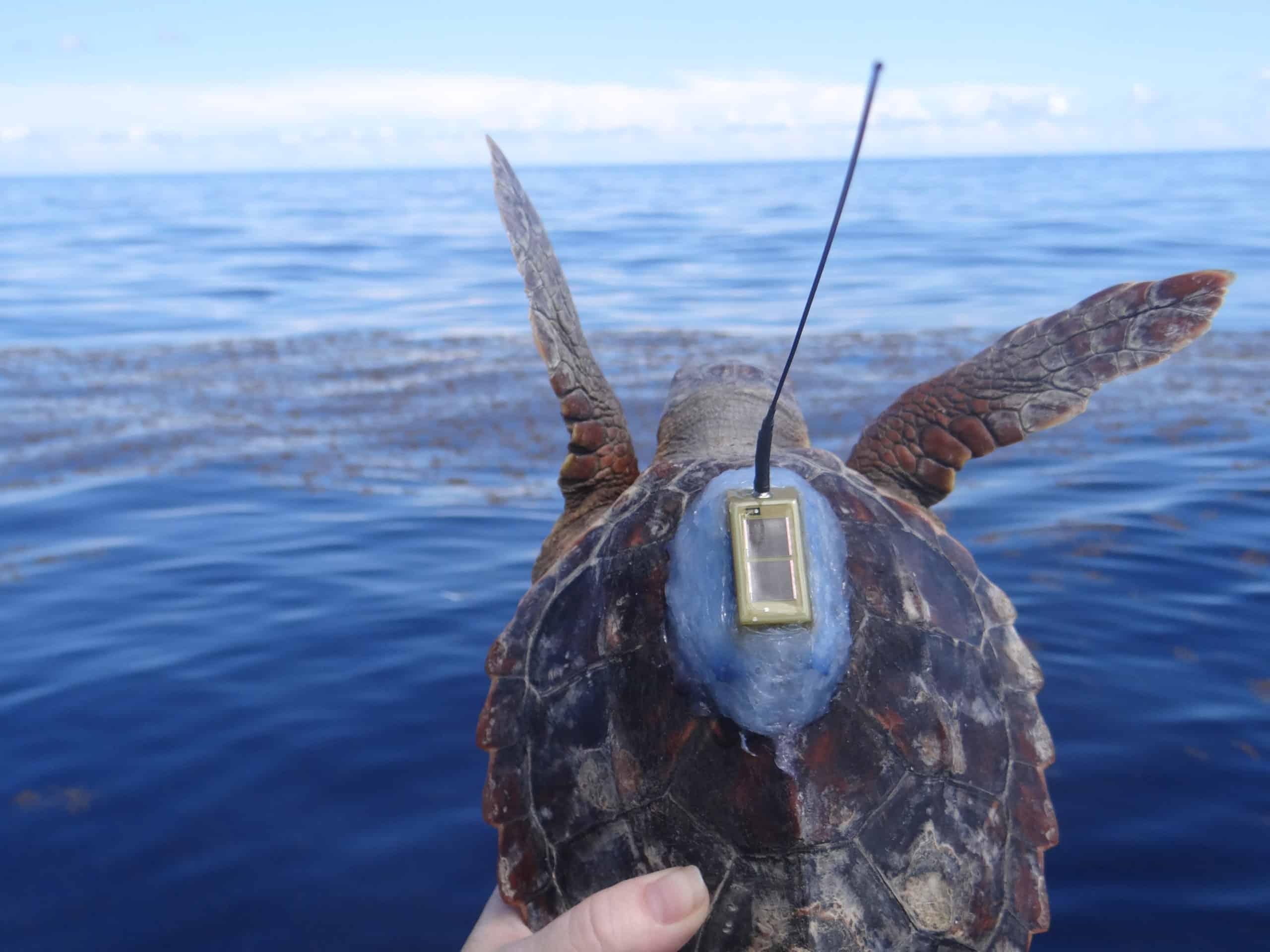
Credit: Kate Mansfield/NMFS Permit 19508
At first, they tried a technique that had proved successful with loggerhead sea turtles (Caretta caretta) like the one pictured above. That technique didn’t work — the keratin on the shells peeled as the young turtles rapidly grew. They tried acrylic that manicurists use to glue fake nails on people’s fingernails at beauty salons. Turtle shells are made out of similar keratin as human finger nails, so the technique worked to keep the devices glued onto the loggerheads for about six months before falling off. The acrylic also helped to keep the keratin from peeling as the young turtles grew.
Enlarge
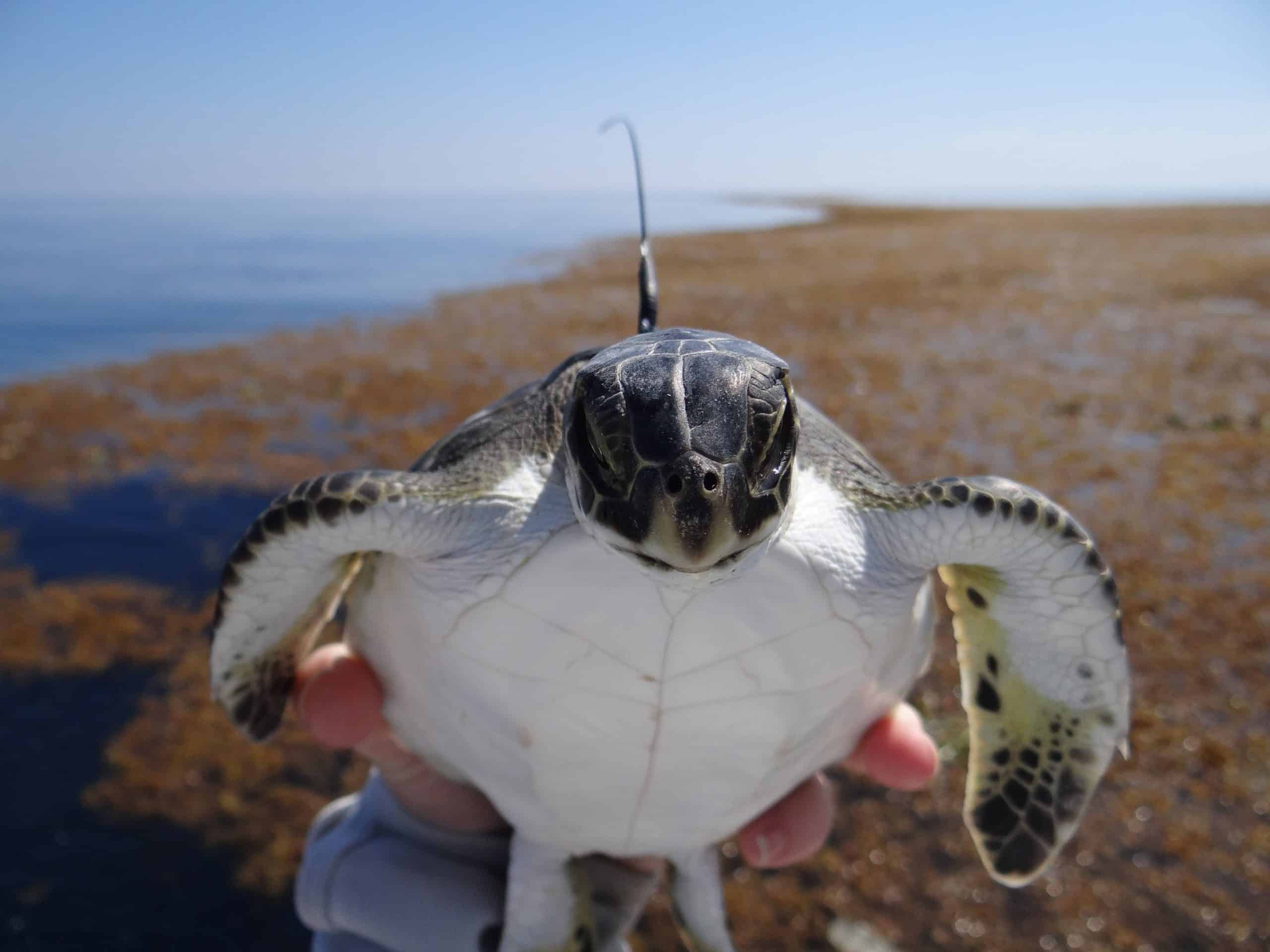
Credit: Kate Mansfield/NMFS Permit 19508
But for some reason, it didn’t work as well on green sea turtles. Instead, Mansfield and her co-authors found some success fastening on the satellite tracking devices using boat epoxy resin, a material used to build and repair vessels.
In 2012 and 2013, they managed to track 21 hatchlings for up to 152 days using this technique. The researchers expected to see the turtle hatchlings drifting along the Gulf Stream, a powerful current that travels northward along the eastern coast of the North America, eventually curving into a large gyre that spins around the Atlantic Ocean.
Some of the turtles followed the Gulf Stream for a while before curving back into the Sargasso Sea, which is roughly centered around Bermuda. Others went straight eastward, swimming directly for the Sargasso.
Mansfield said that while the sample size of 21 hatchlings is relatively small, the study shows that not all turtles are passive drifters.
Enlarge
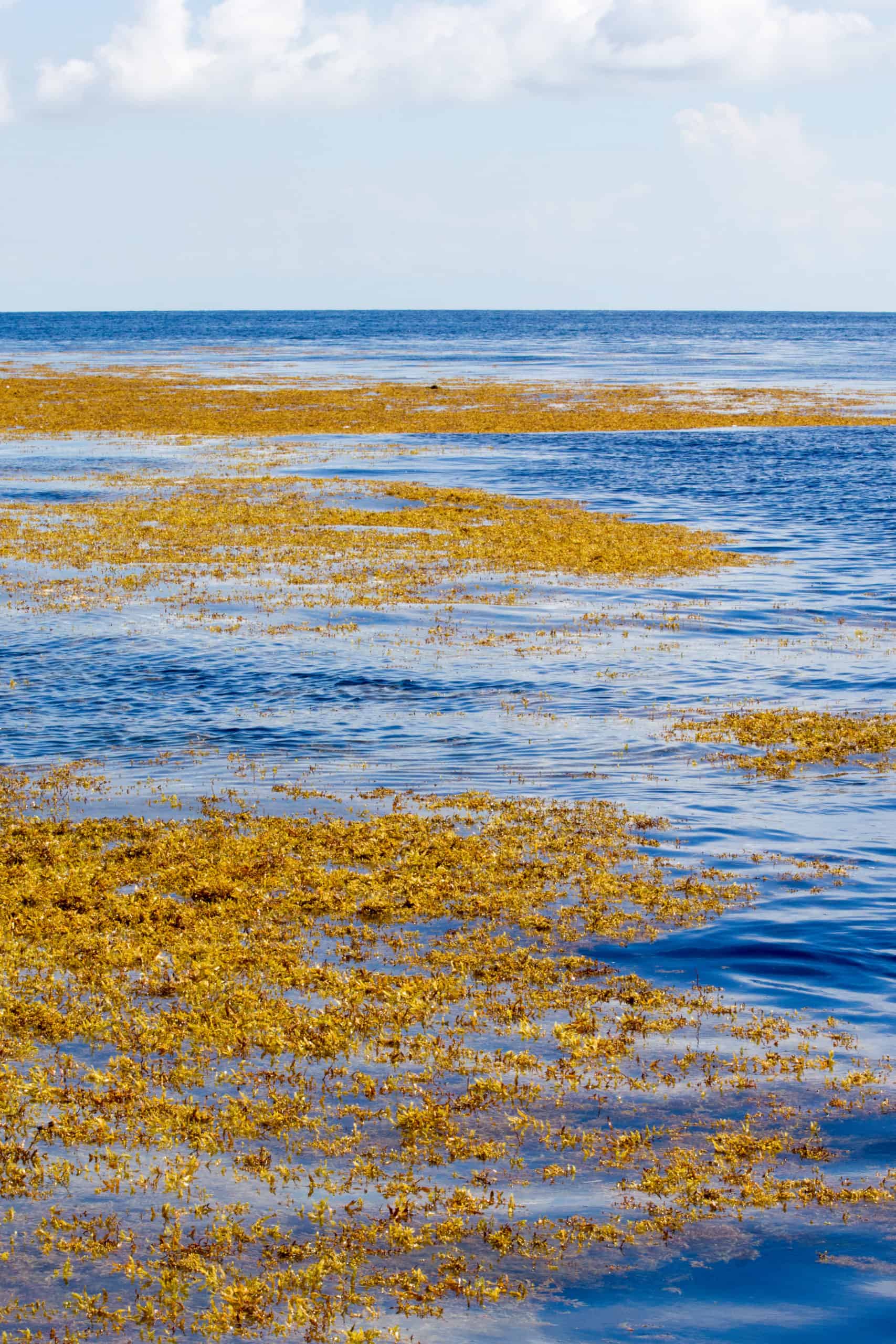
Credit: Gustavo Stahelin
She speculates that they make their way to the Sargasso Sea, named after Sargassum seaweed that grows in abundance on the surface of the ocean there, due to the abundant resources available in the area.
Enlarge
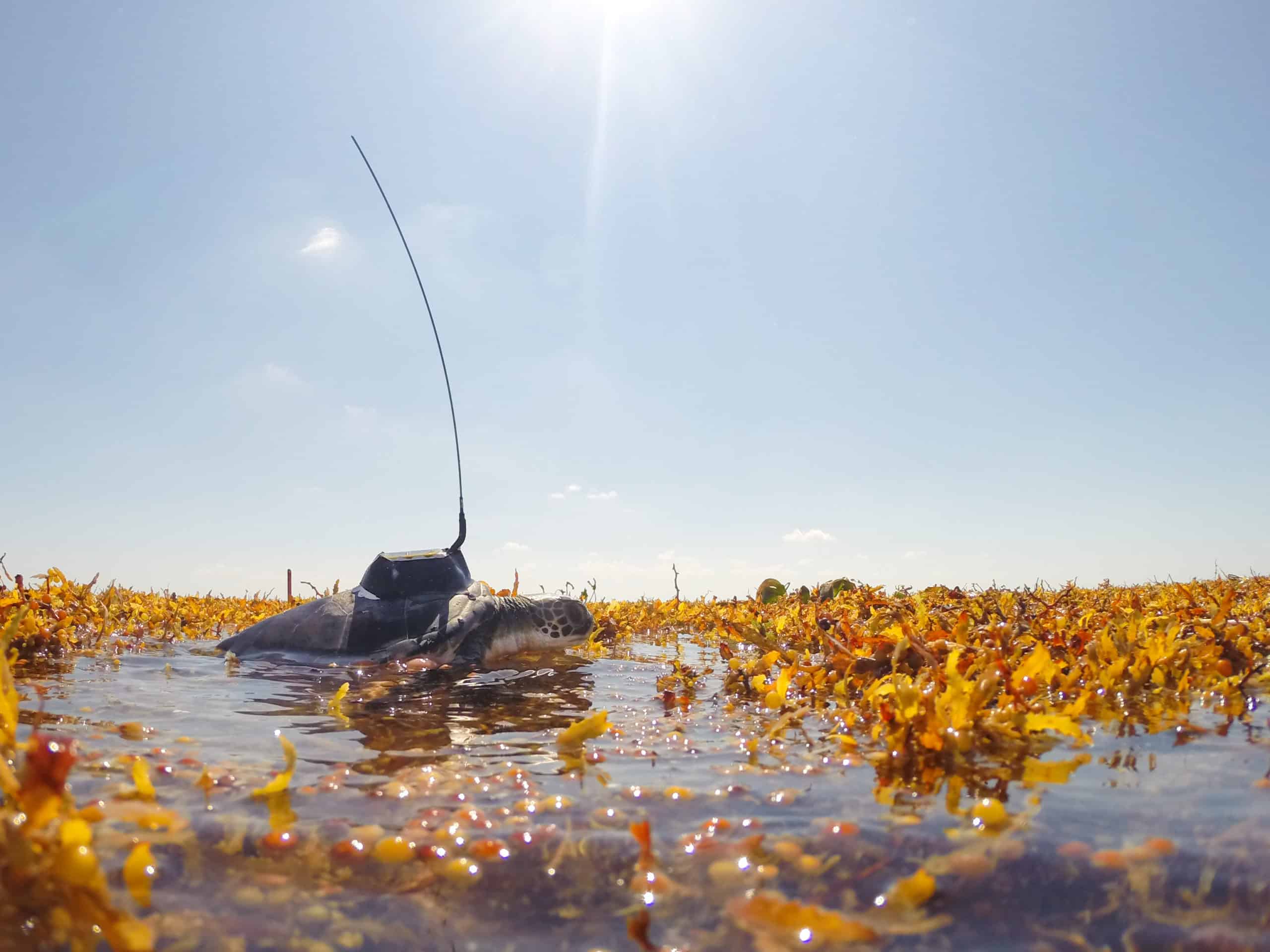
Credit: Gustavo Stahelin/NMFS Permit 19508
Mansfield found green sea turtles and loggerheads in the Sargasso Sea as part of other research — the youngsters were sometimes perched on mats of the floating algae.
“It provides them likely with a really safe, protected habitat,” Mansfield said, adding that they can camouflage in the olive-green algae and feed on the seaweed and small crustaceans found on it.
Enlarge
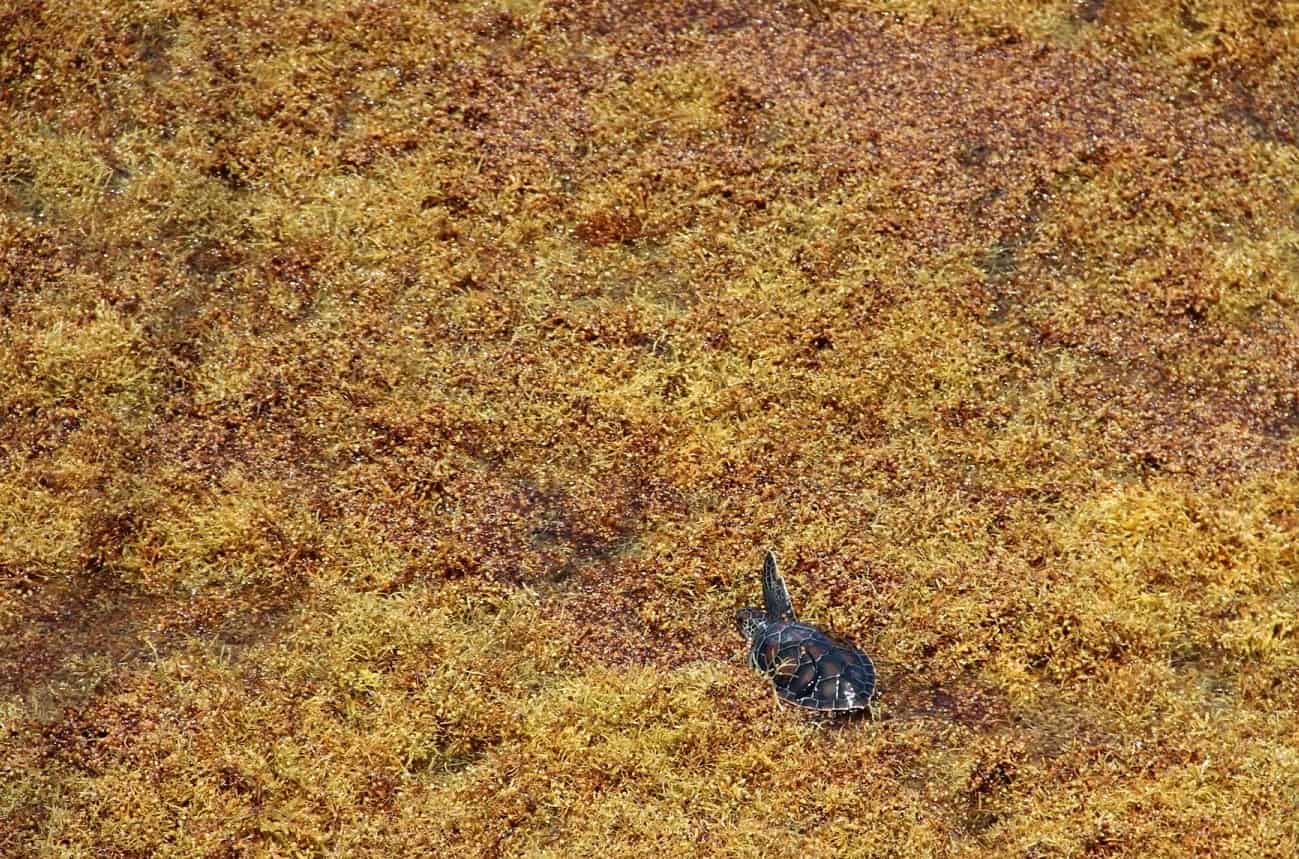
Credit: Chris Long/NMFS Permit 19508
Since the algae floats, small turtles can also keep warm by perching on top of it. “If you’re a cold-blooded animal, it’s a good place to be,” she said.
Warmth helps the turtles digest their food faster, allowing the youngsters to grow quicker.
“It generally helps you outgrow the jaws of sharks,” Mansfield said.
The study only reveals the first part of the mystery of where these hatchlings spend their lives. Most of the devices fell off after 150 days or so, meaning the large part of the early lives of green sea turtles is still unknown.
Enlarge
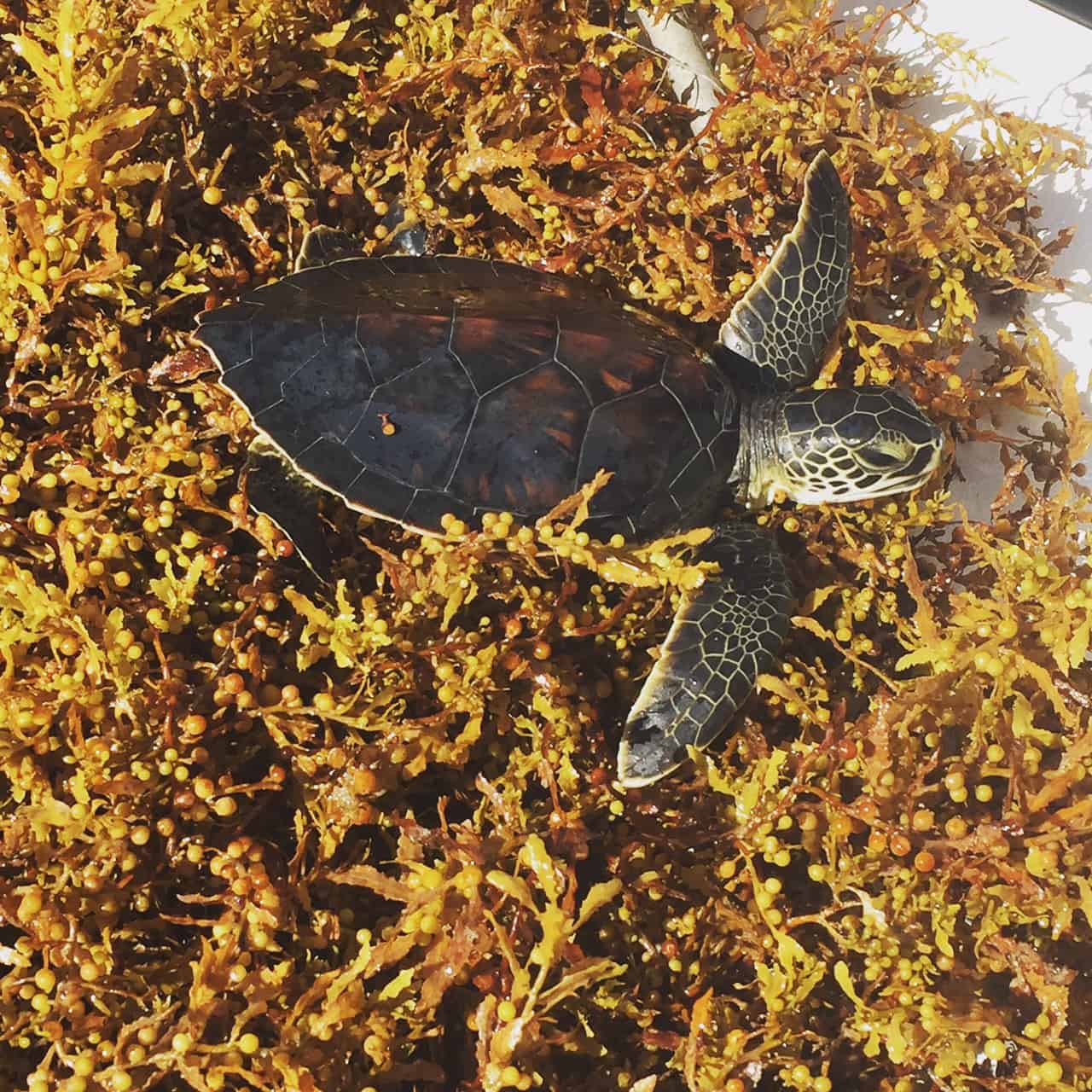
Credit: Kate Mansfield/NMFS Permit 19508
But now that researchers know where to look for the young turtles, they might be able to catch more and fix satellite tags to track the reptiles for the next 150 days of their lives.
This photo essay is part of an occasional series from The Wildlife Society featuring photos and video images of wildlife taken with camera traps and other equipment. Check out other entries in the series here. If you’re working on an interesting camera trap research project or one that has a series of good photos you’d like to share, email Josh at jlearn@wildlife.org.
Header Image: A young green sea turtle floats in the Sargasso Sea. Credit: Gustavo Stahelin/NMFS Permit 19508



